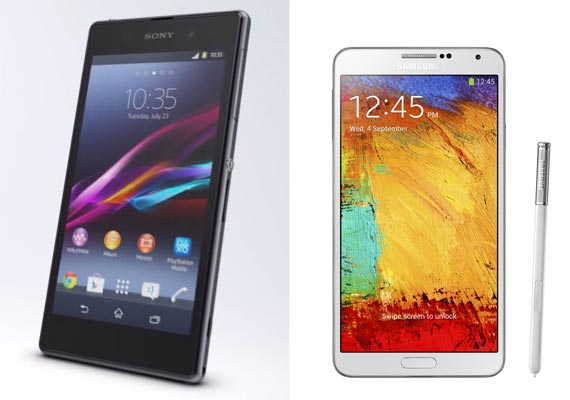Sony Xperia Z1
The camera resolution in Z1 has improved from an already impressive 13 megapixels to an astounding 20.7 megapixels. The sensor size too has been increased to 1/2.3-inch, which is bigger than the sensors you'd typically find inside smartphones. The larger the sensor, the more light can be taken in, which should help give overall better clarity, particularly in lower-light scenarios. The Z1 uses a wide-angle (27mm) Sony G Lens camera with a bright F/2.0 aperture and a BIONZ image processor. The result: the Z1 produces excellent quality images.

The Xperia Z1 images show "good overall exposure, excellent detail preservation outdoors, pleasant colors and low noise levels in all situations". The Z1 also performs well when using its flash. On the downside, the Z1 may produce slight color shading and excessive exposure times in low light under 20 lux (that causes motion blur). In video mode the Xperia Z1 also displays a good overall performance.

The Z1 can take some stunning close-up shots — and shoot in 20MP with enough lighting and you'll capture an incredible amount of detail.
On the software end, the Xperia Z1 comes with lots of new features, including manual controls and social features like the ability to live-stream video to Facebook. The camera app lets you toggle the flash options (fill, auto, and red-eye reduction) on and off, and activate more advanced features like the smile-detection tool, burst mode, geotagging, and the auto-upload feature, with the latter wanting to dump copies of your pics to Sony's own PlayMemories Online cloud server. Sony has further added an Apps toggle to the camera, which houses the photo effect tools, manual mode, timeshift burst mode, panorama stitcher, its Info-eye augmented reality search tool and more.
While manual mode lets users select their own white balance options and choose from some present scenes when recording video, the augmented reality comedy features lets you add a variety of computer generated scenes pop up atop the image.
Galaxy Note 3
The Samsung Galaxy Note 3 has a 13-megapixel camera with a single-LED flash. Specs-wise it is similar to the Galaxy S4, with an f/2.2 lens and a 1/3.2-inch sensor, resulting in tiny sensor pixels of 1.1 microns. In testing, the camera can quickly focus and fire. It takes good outdoor shots but dark areas sometimes lack detail. In indoors, the focus was soft, and the noise was kept under control well. The front-facing camera takes bright selfies that are of decent quality. Samsung has cut the dedicated Night mode out of the Note 3. Instead, it relies simply on the Auto mode for low-light shots. The Note 3 also performs better than the S4 in creating depth of field effects.
The Note 3 is very similar in use to that of the Galaxy S4. It is easy to use and is designed to operate with just the one thumb. The Note 3 camera is set to full auto, meaning you only need to pick the subject of your shot. There's no physical camera button on the phone, but fast focusing and virtually zero shutter lag means that you can really enjoy the photography on the go.

Aside from Auto, in total you'll see 12 photo modes. They are: Drama Shot, Beauty Face, Sports and Golf modes, as well as HDR (High Dynamic Range), Panorama, Sports, Surround shot and Live effect. Among them the best are Rich Tone (an HDR mode), Panorama and Sport. HDR merges multiple exposures types to bring out more detail in your snaps, perfect if the lighting conditions are poor, or if you're shooting a scene with overcast clouds; Panorama is self-explanatory, shooting a wide view of your surroundings; and Sport keeps the shutter speed quicker than it would be in Auto mode, making fast-moving objects appear sharp. There are some less useful modes, too, like Beauty Face and Drama Shot, which don't seem to accomplish much.

Beauty Face softens faces to get rid of wrinkles and spots – it's a bit odd. Drama takes multiple exposures and merges them, to let you get multiple instances of one moving object in a single picture. Eraser takes multiple exposures too, but with the aim of removing moving objects from a scene. The weirdest of the lot is Golf, which is designed precisely to capture a multi-exposure shot of a golf swing.
On the video, both the front and rear cameras record smooth, sharp 1080p footage at 30 frames per second, and the rear camera's stabilization and detail look really good.

